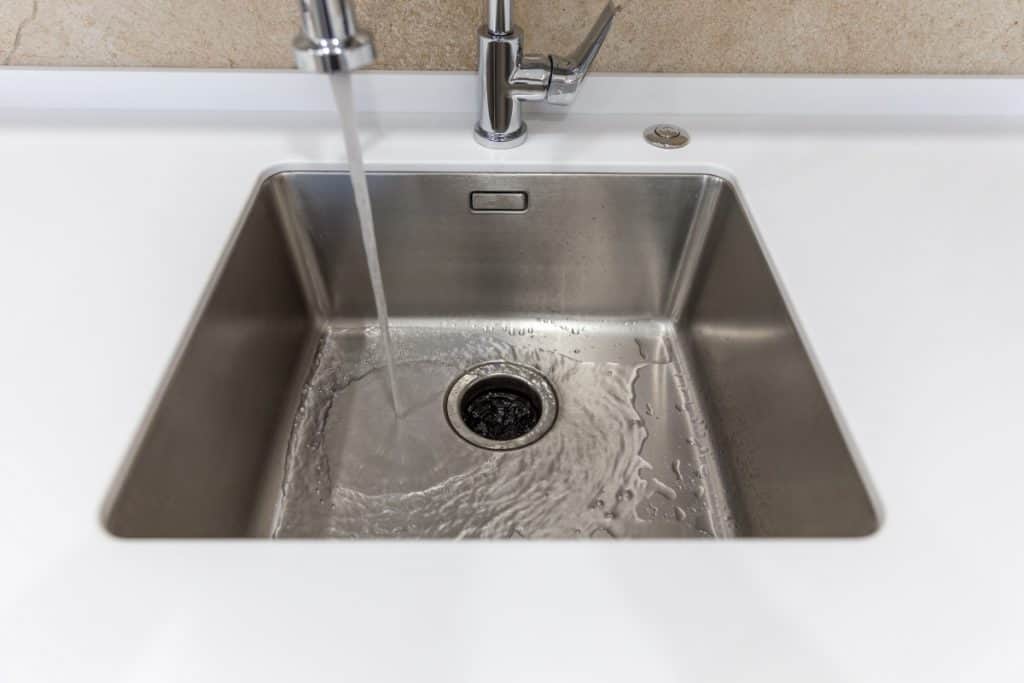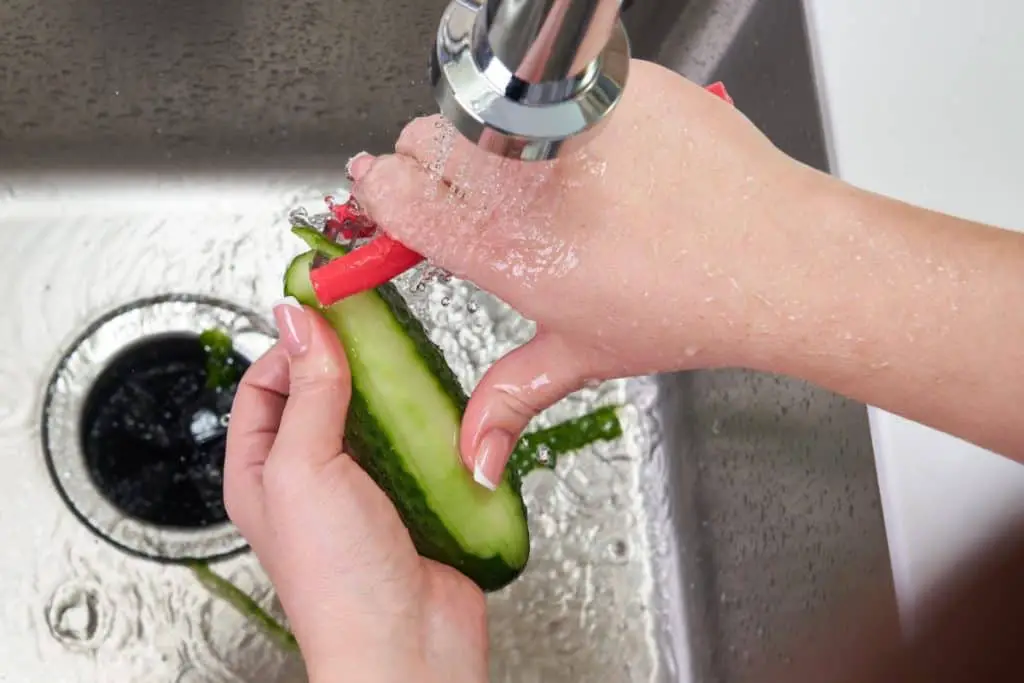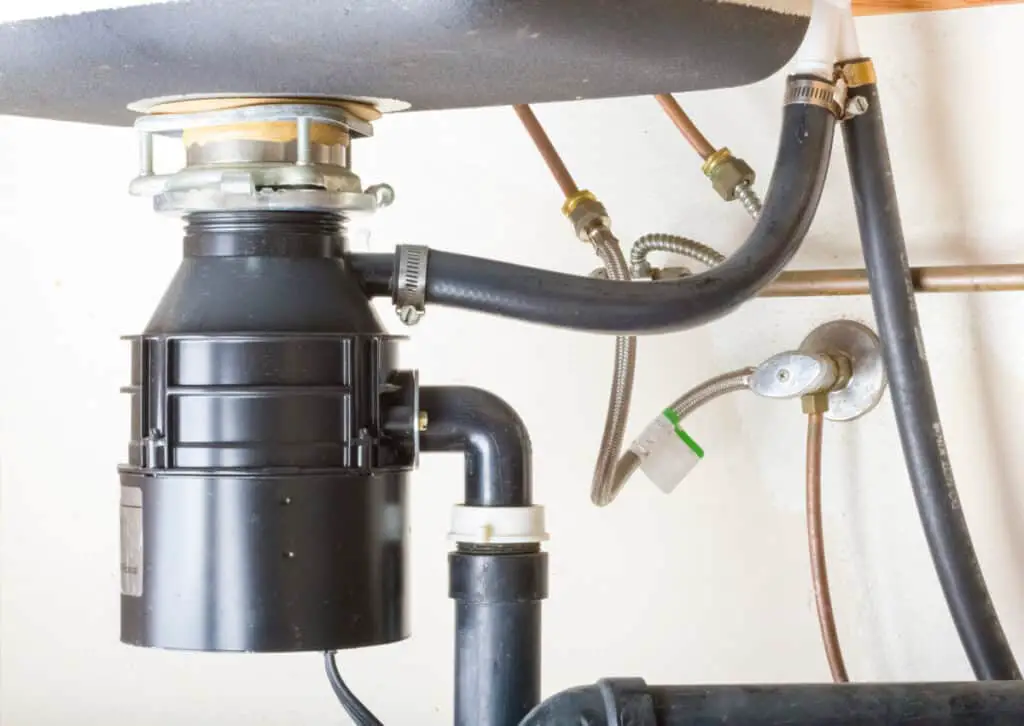
If you’re like most people, you have probably lived your entire life thinking that beneath the sink drain lies a deadly spinning blade otherwise known as the garbage disposal. It would stand to reason that a disposal unit that has been designed to grind up food would be equipped with blades worthy of the task. However, a garbage disposal unit might be constructed just differently than you might think.
Garbage disposals do not have blades. Instead, they are equipped with a rotating plate with impellers on top. When the plate spins, the impellers throw food at a stationary grinding ring which then breaks the food down into smaller pieces. This enables food to be flushed out when the sink is on.
So now you know the truth: Garbage disposal units do not have blades, who knew? Now that you know this, you might be asking a few other questions such as how do garbage disposals work and what do I have to do to keep them in good, clean condition? If you have asked or are asking any of these questions, read on to learn more information on the subject!
How Does A Garbage Disposal Work?
The main and original purpose of a garbage disposal is to grind up and get rid of all the food that might happen to fall down the drain. It will make it easier for food particles to rush down the drain and through the pipe without causing obstructions of any kind.
Inside of the garbage disposal, just inches from the drain of your sink is what might be considered a grinding chamber. Here your food is either shredded or ground down until it is nothing but tiny particles. Impellers are the closest thing a garbage disposal unit will have to blades and this is right where they come in.
The impellers push the food into the grinding chamber walls, where they are ground down and shredded. Once the food has been shredded into small enough pieces, water will force it through that chamber and down the drain, never to return. And all of this is accomplished without a single blade!
What Limits Do Impellers Have?

Because garbage disposals provide this “service” for us, people tend to get the idea that they are invincible and will survive whatever is thrown at them. Unfortunately, this is not altogether true because garbage disposals can suffer some pretty severe damage if you aren’t careful about what you feed them. Here are some absolute don’ts for garbage disposals.
First of all, avoid putting any kind of meat waste down your garbage disposal. This can be the meat itself, gristle, grease, oil, or bones. None of it should make its way down the drain and into the garbage disposal because the greasier the waste, the worse it is for the impellers and rotator. Grease can solidify inside your unit and it will eventually gum up the mechanics and make it extremely difficult to use the disposal in the future.
Avoid putting rice and pasta down the garbage disposal. Both of these things swell when they get wet and that will become a problem. Pasta especially will become slimy and gummy, and it will clog the inner workings of the disposal faster than you might think.
Keep harsh chemicals such as bleach out of your disposal where possible. You might be thinking, then how do I clean the garbage disposal? You can clean your garbage disposal, but you shouldn’t use bleach. Most disposals are comprised mainly of steel and other metals.
These will corrode easily if it is brought into frequent contact with bleach or another similar cleaning substance. These chemicals will slowly break down the components of the disposal until it is no longer fit for use. This will not bode well for you or your disposal so be careful about what you put down the drain and you’ll be far better off.
It is wise to avoid putting fibrous vegetables or corn husks down the disposal as well. Instead of splitting into chunks, vegetables such as lettuce and celery will break into fibers that will prove very difficult to break down completely. Instead, it will become a tangled mess and clog not only the disposal but possibly the sink drain as well.
Cleaning the Garbage Disposal

So, now that you know how to take care of your disposal and what things to avoid “disposing” of, it’s important to know how to maintain the disposal and keep it clean. Rather than sharpening the blades (because there are none), you’ll need to clean the impellers and the grinding ring. This will keep the ring sharp enough to tear up the food.
First, you can try using ice cubes which is one of the easiest and most effective ways to completely clean the disposal. Ice will act both as a cleaner and a scourer. Grinding a few ice cubes up in the disposal will help scrape the residue off the impellers and the grinding ring. You can add a little salt, too, if you want an even greater effect.
You can also consider giving vinegar and baking soda a try. Start by pouring a few tablespoons of baking soda down the disposal letting it sit for ten or fifteen minutes to absorb all that it can. Try to scatter the soda as much as possible. That way, it will cover more area.
Once the soda has sat, pour enough vinegar down the disposal to make the soda bubble and fizz. Once the fizzing has built up and then subsided, let it sit for another few moments and scrape up all that gunk. Once the bubbling has subsided completely, rinse the disposal with hot water and run it for a moment or two.
By the time that’s done, your disposal should be sparkly clean, and any weird stenches that previously emanated from the disposal should be gone. That’s the nicest thing about using vinegar and baking soda; it not only cleans the disposal but also gets rid of rotten smells.
Related Topics:
If you like the article above, here are some other similar articles you should check out!
Should Garbage Disposal Blades be Loose?
